Haedong Yonggungsa Temple (해동 용궁사(부산))
2025-04-15
86 Yonggung-gil, Gijang-gun, Busan
Haedong Yonggungsa Temple is situated on the coast of the north-eastern portion of Busan. This superb attraction offers visitors the rare find of a temple along the shore line as most temples in Korea are located in the mountains. Haedong Yonggungsa Temple was first built in 1376 by the great Buddhist teacher known as Naong during the Goryeo dynasty.
The main sanctuary of the temple was reconstructed in 1970 with careful attention paid to the colors that were traditionally used in such structures. On the right-hand side, inside a cave, is a uniquely designed Buddhist sanctum, while situated just in front of the main sanctuary is a three-story pagoda with four lions. The four lions symbolize joy, anger, sadness, and happiness. Other special sites at the temple are the 108 stairs and stone lanterns lining the rocky landscape. After going down the 108 steps, one will be delighted with the beauty of the temple. Midway down the 108 steps one can stop and enjoy the calming sounds of the waves, and view the majestic sunrise.
Hwaseong Fortress Tourist Trolley (화성어차)
2025-07-01
8 Changnyong-daero 103beon-gil, Paldal-gu, Suwon-si, Gyeonggi-do
+82-31-228-4686
With a design inspired by the royal vehicle used by King Gojong and palanquins of the Joseon dynasty, Hwaseong Fortress Tourist Trolley provides visitors with a comfortable tour around the main attractions of Suwon Hwaseong Fortress. It is divided into a sightseeing course that starts at Hwaseong Temporary Palace and visits the main gates, and a circular course that starts at Yeonmudae Post and visits the main military facilities. Reservations are required on the website. All seats are equipped with an earphone jack offering an audio guide of Suwon Hwaseong Fortress in English, Chinese and Japanese.
Suwonhyanggyo Confucian School (수원향교)
2022-12-29
107-9, Hyanggyo-ro, Paldal-gu, Suwon-si, Gyeonggi-do
+82-31-245-7639
Suwonhyanggyo Confucian School was built in 1291 in front of Hwasan Mountain in Hwaseong where it stayed for nearly 500 years. It was moved to its current location in 1789 with the construction of Hwaseong Fortress. During the move, some of the original wood was exposed to water and began to rot. These parts were repaired in 1795 and efforts were made to prevent the wooden structure from futher damage. The current school is comprised of various halls, gates, and pavilions. It is registered as Gyeonggi-do Cultural Property and operates programs every summer for regional students.
Firefly Restroom (반딧불이화장실)
2019-10-31
166, Gwanggyosan-ro, Jangan-gu, Suwon-si, Gyeonggi-do
+82-31-228-2259
In honor of the 2002 FIFA World Cup Korea/Japan, Suwon adopted the idea of ‘restrooms with culture’- building beautiful, clean, brand new bathrooms at main tourist sites around the city. The Firefly Restroom, located near the Gwanggyo Reservoir, is the most beautiful of them all. It features a tunnel for the handicapped, a ceiling which filters light, a simple interior, a coffee vending machine, and a rest area.
Hwahongmun Gate (화홍문(華虹門))
2025-05-22
377 Suwoncheon-ro, Paldal-gu, Suwon-si, Gyeonggi-do
Hwahongmun Gate refers to the northern gate of Hwaseong Fortress among the two main gates installed to control the flow of Suwoncheon Stream that cuts through the fortress. Hwahongmun Gate consists of seven arched watergates in varying sizes. The watergate at the center is larger than the others to control the water flow effectively.
◎ Travel information to meet Hallyu’s charm – TV series “Lovely Runner”
Hwahongmun Gate is known for its beautiful nighttime view, with warm illuminations casting a glow over the gates and walkways. The bridge in front of Hwahongmun, where Sun-jae confessed his feelings to Sol, has become a popular photo spot for fans looking to capture a piece of the romance.
Changnyongmun Gate (창룡문)
2023-09-25
697, Gyeongsu-daero, Paldal-gu, Suwon-si, Gyeonggi-do
Changnyeongmun Gate, the eastern gate of Hwaseong Fortress, is similar in shape and size to Hwaseomun Gate to the east. Something to take note of is the nameplate carved into the wall left of the gate. While the names on the polished granite at the other three main gates have become obscure over time, the nameplate at Changnyeongmun Gate is still clearly visable.
Hwaseomun Gate (화서문)
2022-12-29
334, Jangan-dong, Paldal-gu, Suwon-si, Gyeonggi-do
+82-31-290-3600
Hwaseomun Gate is the western gate of Hwaseong Fortress, a Treasure. Over the stone mujigae (rainbow) door is a single-story tower gate. Hwaseomun Gate's ongseong (defensive gate) forms a crecent shape, with one side of the ongseong remaining open.
Paldalmun Gate (팔달문)
2021-01-29
780, Jeongjo-ro, Paldal-gu, Suwon-si, Gyeonggi-do
+82-31-228-2765
Paldalmun Gate is the southern gate of Hwaseong Fortress, and its name means "a gate opening to a road that leads to all directions." Among the four gates of Hwaseong Fortress, the northern and southern gates are bigger and more grandiose. The gate has an entrance wide enough to let the king's palanquin pass through and a watchtower over the entrance. Outside of the gate is a crescent-shaped protection wall called ongseong.
Among the ongseong walls found across the country, Paldalmun Gate's ongseong wall stands out in terms of size and form. The hip roof and decorations seen on Paldalmun Gate's watchtower resemble that of fortress watchtowers, and are recognized as representation of late Joseon dynasty's watchtower architecture.
Gwanggyosan Mountain (광교산)
2024-02-29
58 Sanggwanggyo-dong, Jangan-gu, Suwon-si, Gyeonggi-do
Gwanggyosan Mountain straddles the cities of Suwon and Yongin. Its summit, Shirubong Peak, stands at 852 meters above sea level. The mountain is located in a plain area with no large mountains around it, and the ridges are very gentle and lush with trees in all directions, so many people visit for forest bathing and hiking. Its winter snowscapes are particularly renowned. Notable cultural assets include the tomb and monument of General Kim Joon Ryong, built to commemorate his great victory during the Qing invasion of Joseon, and the tomb of Sim On who served as a civil minister in Joseon dynasty.
Janganmun Gate (장안문)
2019-12-31
910, Jeongjo-ro, Paldal-gu, Suwon-si, Gyeonggi-do
+82-031-228-4416
Janganmun Gate is the main gate of Hwaseong Fortress at the northern wall. Jangan means capital, implying that Hwaseong Fortress is the secondary capital. Janganmun Gate served as the main gate because the king would pass from this gate when arriving from Hanyang, the capital city, now modern-day Seoul. It is interesting to note that this gate is larger than Sungryemun Gate in Seoul.
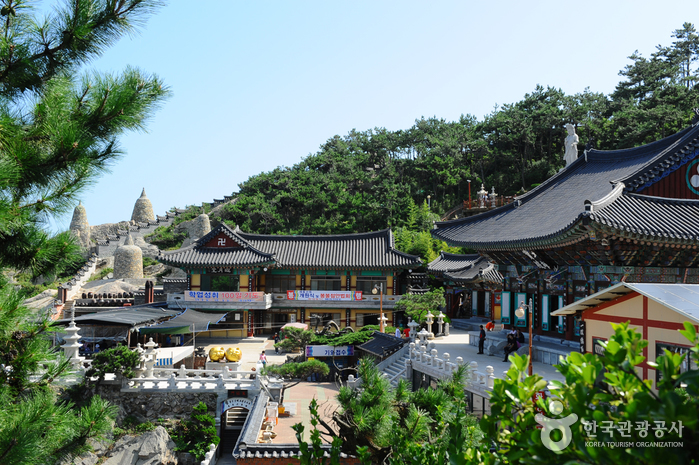
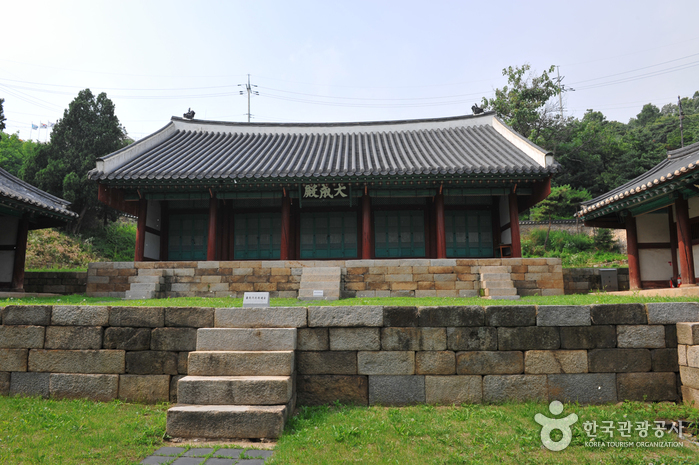
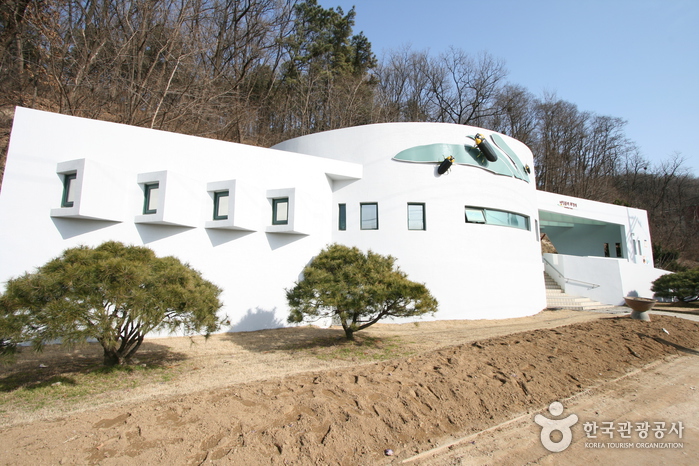
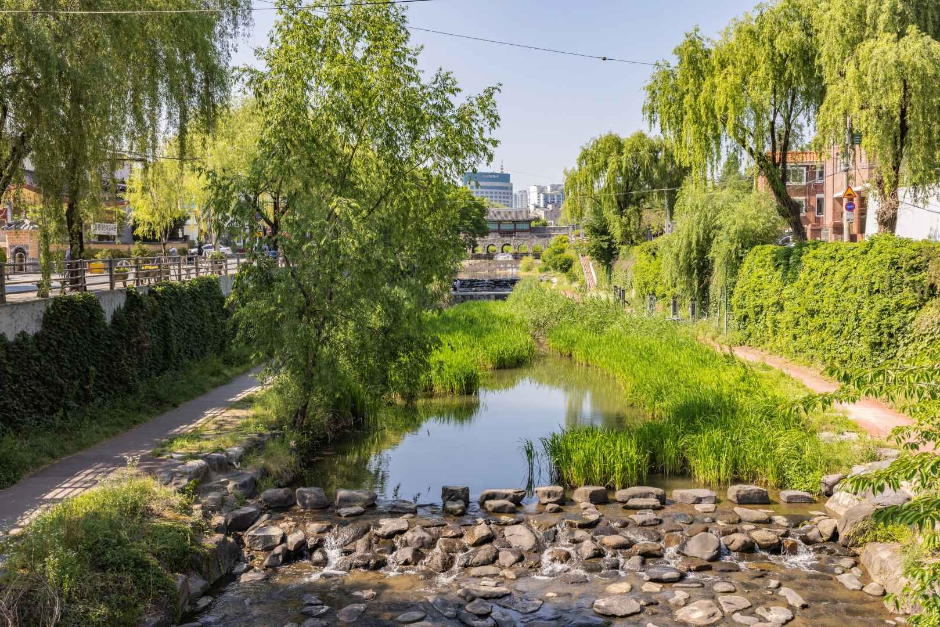

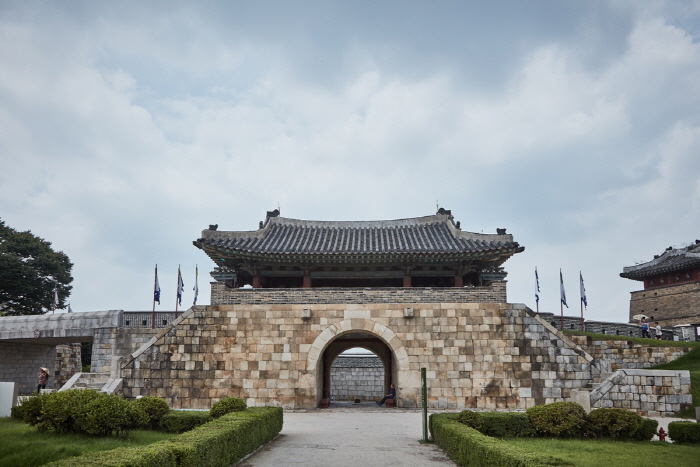
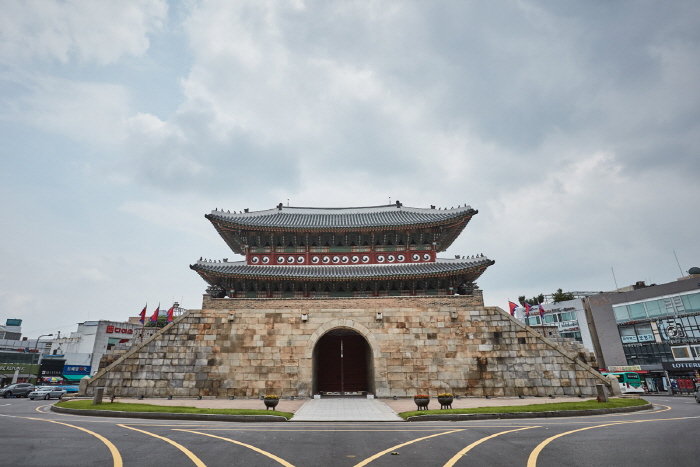

 English
English
 한국어
한국어 日本語
日本語 中文(简体)
中文(简体) Deutsch
Deutsch Français
Français Español
Español Русский
Русский